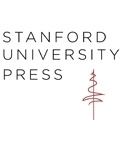Country of origin United States of America | Official website www.sup.org Founded 1892 | |
 | ||
Headquarters Palo Alto, California, United States Profiles | ||
The Stanford University Press (SUP) is the publishing house of Stanford University. In 1892, an independent publishing company was established at the university. The first use of the name "Stanford University Press" in a book's imprinting occurred in 1895. In 1917, the university bought the press, making it a division of Stanford.
Contents
In 1999, the press became a division of the Stanford University Libraries. It was located on Page Mill Road in the Stanford Research Park to the southeast of the Stanford campus before moving to its current location, Redwood City, in 2012-2013. It publishes about 130 books per year. Stanford relies on the University of Chicago Press to perform the actual distribution of titles.
Major awards
Books published by Stanford University Press
1933 murder trial
In 1933, David Lamson, a sales manager at SUP, was accused of murdering his wife, Allene, at their home on the Stanford campus. Janet Lewis, wife of Stanford poet Yvor Winters, campaigning for Lamson's acquittal, wrote a pamphlet emphasizing the dangers of using circumstantial evidence. Lamson was ultimately released after being tried four times.
